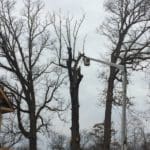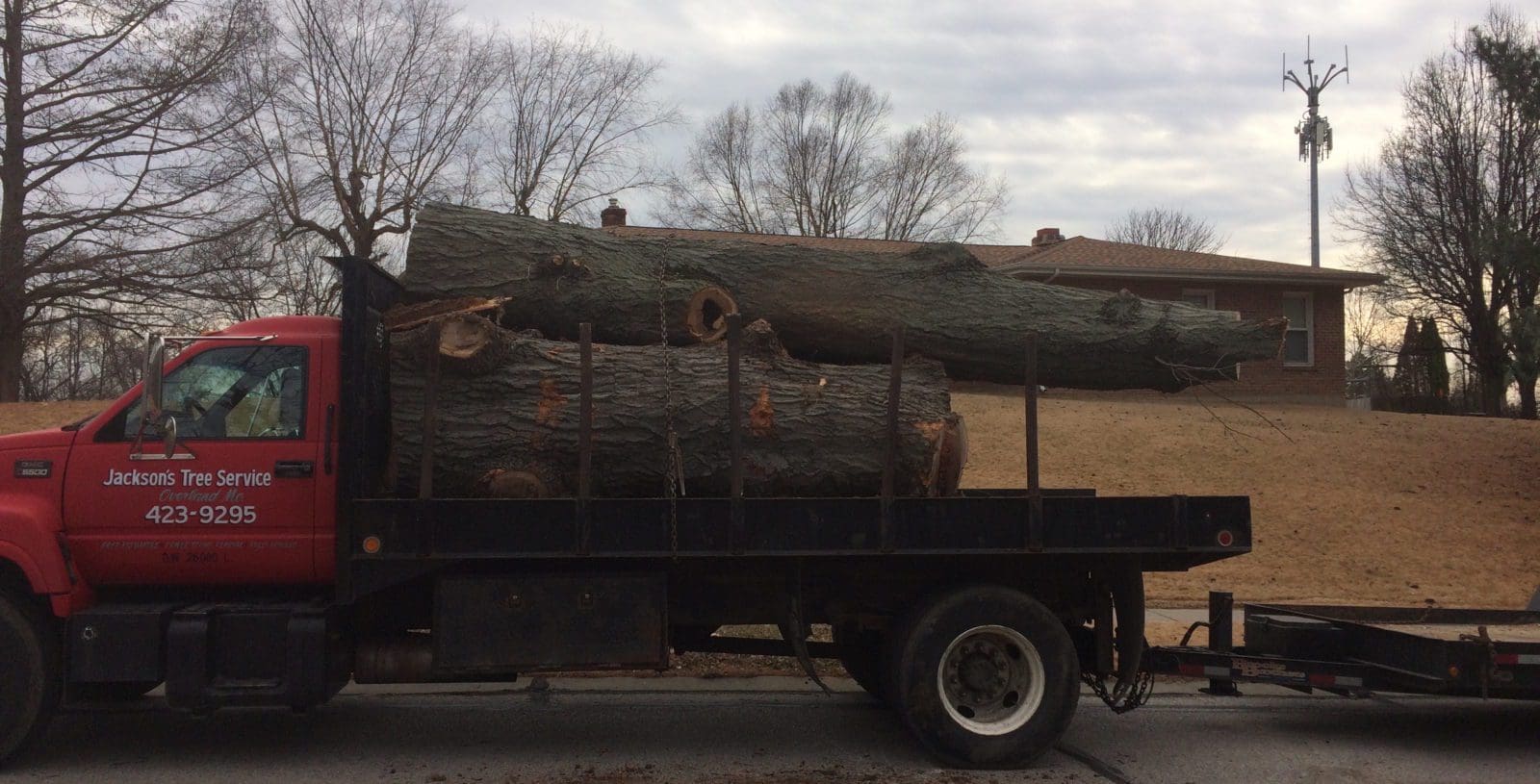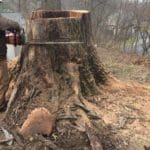In January, we took down what we believe may have been the oldest living American Linden or American Basswood tree (Tilia Americana) in Maryland Heights. This tree’s size and magnitude honestly took our crew’s breath away. This beautiful Linden definitely made its presence known by towering over the yard, the homes, and the subdivision. Our crew went back and forth for a few minutes discussing how old they guessed the tree was, when and if they had ever seen a bigger Linden, and dropping all of their fun facts about Linden trees in St. Louis.
Some info about Lindens and other native St Louis trees from the Missouri Botanical Garden:
American basswood trees often grow in clumps, the stout, straight trunks and branches are quite strong. Their strength, heart-shaped leaves, flowers, and fruits on parachutes make this and numerous related lindens species and cultivars very popular around homes. I like it. Problem is Japanese beetles like Lindens too.
 We’ve mentioned before the huge responsibility we feel when helping a homeowner decide whether or not to remove a tree. It’s a decision not to be taken lightly, but that has to be made for any variety of reasons. While we do our best to respect each and every tree we remove for a customer, we have to tell you that certain trees tug on our heart strings a bit more than others – especially the longstanding, timeworn trees that we know have seen so much of St. Louis’ rich history and so many Cardinals World Series wins. Our own Lindenwood University in St. Charles was named for the numerous Linden trees on the original 280 acres purchased for the school in 1829.
We’ve mentioned before the huge responsibility we feel when helping a homeowner decide whether or not to remove a tree. It’s a decision not to be taken lightly, but that has to be made for any variety of reasons. While we do our best to respect each and every tree we remove for a customer, we have to tell you that certain trees tug on our heart strings a bit more than others – especially the longstanding, timeworn trees that we know have seen so much of St. Louis’ rich history and so many Cardinals World Series wins. Our own Lindenwood University in St. Charles was named for the numerous Linden trees on the original 280 acres purchased for the school in 1829.
The Linden tree, a medium to large deciduous tree, is a staple throughout St. Louis and St. Charles known for providing great shade and beautiful June flowers. If you walk past a Linden tree in full bloom, you will likely see an abundance of butterflies, and you will hear it hum from the number of bees visiting the tiny yellow-white flowers with their ambrosial aroma. In fact, the honey made from the nectar of Linden flowers is a prized gourmet item known for the intensity of the woody aroma.
You can typically identify a Linden tree due to its:
- Cymes of fragrant, pale yellow, late spring flowers
- Small nutlets which follow the flowers and ripen by late summer
- Mucilaginous sap
- Noticeable winter buds
- Large ovate dark green leaves (to 6” long) with acuminate tips, serrate margins, often silvery undersides and uneven cordate bases
While historically Linden trees grew in rich woods, slopes, bluff bases and along streams they can now be found in subdivisions all over the St. Louis and St. Charles region. In fact, a Missouri Champion Tree of the Tilia Americana species resides right in St. Charles County. The Linden tree is well adapted to Missouri’s climate and is considered one of the premiere shade trees. Just be sure to keep it away from large paved areas – the reflection of the heat can damage the leaves, and watch for black mold, leaf spot, and Japanese beetles.
Learn more about tree removal in St. Louis, Missouri here.


